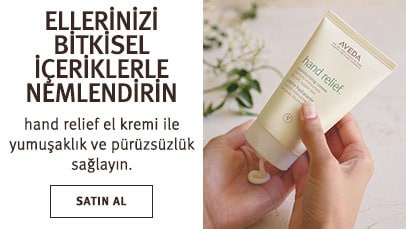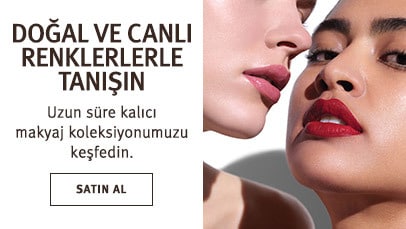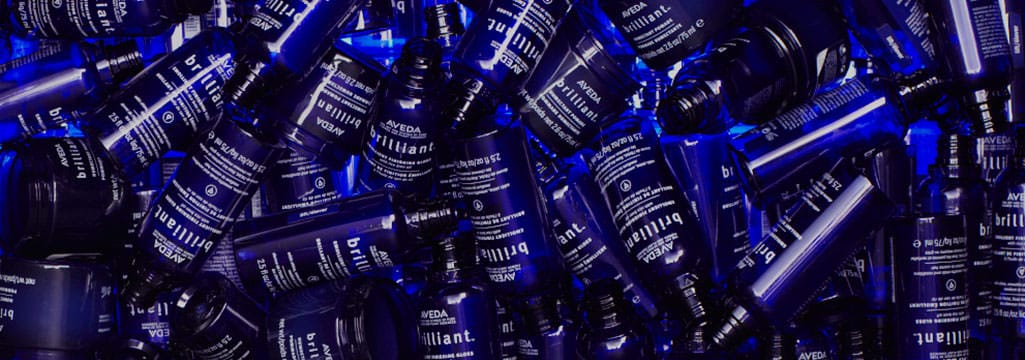We believe there is no responsible alternative to doing business other than through the pursuit of environmental sustainability and this belief guides every decision we make. we find inspiration for doing so in nature and believe that nature is not merely something to be cherished and protected, but also should be emulated as a model of sustainability. we also believe that profit and environmental responsibility will increasingly work together as more industries find out that "nature works"
for both sustainability and the bottom-line.
aveda’s approach to packaging
We are proud to have been the first beauty company using 100% post consumer recycled PET. Now more than 85% of our skin care and hair styling PET bottles and jars contain 100% post consumer recycled materials.
With every package we develop, we're mindful of our environmental footprint and work to minimize our packaging and maximize our use of recyclable and post consumer recycled materials.
our guiding principles
This means we:
• consider the life cycle analysis when developing packaging options
• reduce the size, weight and production processes of packaging wherever possible
• offer packaging that can be recycled whenever possible
• use the most environmentally sound materials and as much post-consumer recycled (PCR) content as commercially possible without affecting the efficacy of the product.
• use renewable energy to manufacture and fill our packaging in Blaine
• challenge our packaging partners to meet the same standards
how we walk the walk
Our strongest initiative is our effort to use post-consumer recycled (PCR) materials in all our packaging. We can't guarantee that our packaging will be recycled, but we can do our part, insuring that the material it's made of will now have the chance of another life, rather than going to a landfill.
Today, 90% of our high density polyethylene (HDPE) plastic bottles use a minimum of 80% PCR, made from milk bottles, and two of our new products - InvatiTM Exfoliating Shampoo and Stress-FixTM Body Lotion - are packaged in 100% PCR HDPE bottles. By our calculation, it saves us over 600 tons of virgin plastic each year (HDPE, or PET). We also use PET from recycled soda and water bottles for many of our bottles and jars. Bottles with 80% or greater PCR make up nearly 90% of all retail and professional plastic bottles for Aveda. The remaining packaging is either glass, which is frequently recyclable, or plastic tubes that are not yet accepted by municipal recycling programs.
We're also working to expand recycling initiatives (i.e. what can be recycled) wherever we can play a part. In 2008, we pioneered the first ever rigid plastic caps recycling program in the United States to raise awareness to the alarming amounts of plastics polluting our planet. Our program inspired vast numbers of people to collect caps, and together we prevented approximately 145 million caps from entering our waterways, oceans and landfills. The program also helped support positive change in the industry with many municipalities across the U.S. now accepting caps-on recycling. In 2015, we ended our caps collection to support the caps-on movement and to advocate for its adoption everywhere.
packaging with plastic derived from plants
FIRST PRESTIGE BEAUTY COMPANY TO COMBINE PCR AND BIOPLASTIC IN A PLASTIC TUBE.
We use 100% post-consumer recycled (PCR) material as much as we can.* When we can't use it, we are starting to combine PCR with bioplastic—as we did in our dry remedy™ moisturizing conditioner and moisturizing masque tubes.
The bioplastic we use is a biopolyethylene derived primarily** from sugarcane. Bagasse is the fibrous byproduct that remains after sugarcane stalks are crushed for sugar production. The bagasse is used as fuel for the production of ethanol, a main ingredient used to produce polyethylene. Sugarcane is a quickly renewable, and thus sustainable, resource. Bioplastic may be recycled†, although the recycling of tubes is limited, so please contact your local recycling program.
*More than 85% of our skin care and hair styling PET bottles and jars contain 100% post-consumer recycled materials.
**Bioplastic is 96% plant derived and 4% petrochemical.
† Because bioplastic is chemically identical to ordinary polyethylene (HDPE or LDPE), it can also be recycled in the same manner as these plastics.
cradle to cradle
aveda’s cradle to cradle journey
Cradle to Cradle Certified is a mark licensed by the Cradle to Cradle Products Innovation Institute. The Cradle to Cradle (C2C) vision and principles align well with Aveda’s long-term commitment to environmental and social responsibility. There are three fundamental C2C concepts which Aveda shares as part of its Mission.
Waste= Food. This is the core of the C2C design philosophy in which materials will be used in continuous cycles either in the biosphere (nature) or the technosphere (industry). Aveda’s vision from its founding has been to develop products that are safe to return to the environment and packaging that can be continuously cycled. While we have not fully achieved these ideals they are the continual guide for product and package development, and we strive to continue our progress in this area.
Use Current Solar Income. Renewable energy in any form is preferred over other forms of energy(fossil fuels, nuclear). Aveda has been committed to using renewable energy for many years, either through the purchase of wind-generated electricity through the electrical grid in Minnesota or the purchase of Renewable Energy Credits or offsets where more direct sources are not available.
Celebrate Diversity. Aveda’s commitment to this concept is reflected in its development of products from diverse plant-derived ingredients often produced or collected by diverse traditional or indigenous people who are protectors of biodiversity around the world.
Aveda began looking to C2C design principles in the early years of the last decade.
The journey has passed through three stages:
• In 2002, Aveda began its journey with C2C. In setting out on a path toward developing products that share the C2C vision, Aveda hired the EPEA (Environmental Protection Encouragement Agency), an environmental research institute located in Germany and led by Dr. Michael Braungart, co-author of the bestselling book “Cradle to Cradle”
to help advise on its future design principles for products.
• In 2009 Aveda sought more formal recognition for our C2C commitments by seeking C2C certification. At that time EPEA and MBDC (McDonough-Braungart Design Chemistry) provided certification of products under EPEA’s C2C principles, and certified seven Aveda products, as well as packaging for those seven products.
• In 2010, the Cradle-to-Cradle Products Innovation Institute (the “Institute) was founded. The mission of this independent organization is to work “with leaders from academia, the NGO environmental community,government and industry to implement a standard following the C2C principles set forth by EPEA and MBDC for assessing and constantly improving products based on five categories:
1. Safe and appropriately sourced materials;
2. Material reutilization;
3. Renewable energy and carbon management;
4. Water stewardship; and
5. Social fairness.
The Institute administers The Cradle to Cradle CertifiedCM Products Program.
Today, the following Aveda products have C2C certification from the Institute:
InvatiTM Scalp Revitalizer Cradle to Cradle CertifiedCM Silver. Packaging (bottle) meets Bronze-level requirements.
InvatiTM Exfoliating Shampoo Cradle to Cradle CertifiedCM Gold. Packaging (bottle) meets Bronze-level requirements.
InvatiTM Thickening Conditioner Cradle to Cradle CertifiedCM Gold. Packaging (tube) meets Basic-level requirements.
InvatiTM Thickening Intensive Conditioner Cradle to Cradle CertifiedCM Gold. Packaging (tube) meets Basic-level requirements.
Invati MenTM Nourishing Exfoliating Shampoo Cradle to Cradle CertifiedCM Silver. Packaging (bottle) meets Basic-level requirements.



